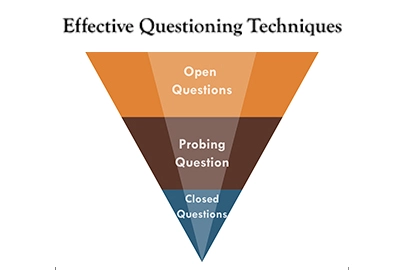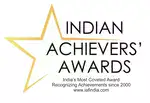Utilizing Closed-Ended Questions For Quantitative Market Research
Ask any top quantitative research firm about gathering structured, actionable insights, and they'll likely point you to one essential tool: close-ended questions. For companies aiming to drive data-backed decisions, close-ended questions are indispensable in quantitative descriptive research, especially when it comes to measuring customer satisfaction or decoding audience preferences. Unlike open-ended questions that may bring subjective nuances, close-ended questions offer clear, organized responses that are easy to analyze—making them a backbone of quantitative market research services. In today's blog, we'll explore the different questioning techniques prevalent in the field of market research. We will also dive into the impact of close-ended questions in market research, how they empower data-driven decisions, and why harnessing their potential is vital for your business growth. Let's get started!
10 Common Questioning Techniques Used In Market Research
The success of market research hinges largely on the quality of the questions asked. No matter if you're aiming to understand customer satisfaction, test new product concepts, or gauge brand perception, using the right questioning techniques ensures you gather the most insightful and actionable data. Below are 10 of the most effective questioning techniques that can elevate your market research process:
1. Closed-Ended Questions
Closed-ended questions are highly effective for gathering structured, quantifiable data. These types of questions typically offer respondents a set of predefined answer choices, making the responses easier to analyze and compare. Common examples include multiple-choice, yes/no, or Likert scale questions. They are particularly valuable in quantitative research, where the goal is to generate measurable, statistically relevant insights.
Example:
"How often do you purchase our product?"
- Once a week
- Once a month
- Once every few months
- Never
2. Open-Ended Questions
Open-ended questions allow respondents to provide more detailed, subjective answers. They are useful for exploring deeper insights into customer thoughts, motivations, or feelings. Although more challenging to analyze, open-ended questions give researchers the flexibility to uncover unexpected insights or sentiments that can add richness to the data.
Example:
- "What do you like most about our product?"
- "What improvements would you like to see?"
3. Scaled or Rating Questions
Scaled questions are a powerful technique for understanding the intensity of respondents' attitudes, opinions, or experiences. These questions use a rating scale (such as 1 to 5, or 1 to 7) to assess the degree of satisfaction, likelihood, or agreement with a statement. Common tools for this include Likert scales or semantic differential scales. These questions help quantify subjective feedback for more nuanced analysis.
Example:
"On a scale of 1 to 5, how satisfied are you with our customer service?"
- (Very Dissatisfied)
- (Neutral)
- (Very Satisfied)
4. Dichotomous Questions
Dichotomous questions are a type of closed-ended question that offers only two response options, such as "Yes/No" or "True/False." These questions are simple and efficient for gathering clear, binary data. They work well when the researcher wants to establish whether a specific behavior or attitude exists or not.
Example:
"Have you ever purchased from our website?"
- Yes
- No
5. Multiple-Choice Questions
Multiple-choice questions provide several answer options, allowing respondents to choose one or more that best reflect their thoughts or behaviors. These questions are particularly effective for capturing specific preferences or behaviors without overwhelming respondents with too many options.
Example:
"Which of the following social media platforms do you use most frequently?"
- TikTok
6. Ranking Questions
Ranking questions ask respondents to order items based on their preferences, priorities, or importance. This technique is useful when trying to understand how different factors or features compare to one another. Ranking questions can help businesses prioritize elements based on customer demand.
Example:
"Please rank the following features in order of importance when choosing a smartphone."
- Battery life
- Camera quality
- Screen size
- Price
- Brand reputation
7. Matrix Questions
Matrix questions allow respondents to evaluate multiple items using the same set of response options. This technique is highly efficient when asking respondents to assess several related statements or attributes, and it helps maintain consistency across responses.
Example:
"Please rate the following aspects of our service on a scale of 1 to 5 (1 = Poor, 5 = Excellent):"
- Friendliness of staff
- Wait time
- Product knowledge
- Overall satisfaction
8. Funnel Questions
Funnel questioning is a technique where questions begin broad and general and then narrow down to specific details. This approach helps uncover a deeper understanding of a respondent's attitudes or experiences by starting with an open-ended question and gradually narrowing the scope of the questions as the conversation progresses.
Example:
- First Question: "Can you tell us about your experience with our brand?"
- Follow-Up Question: "What was your main reason for choosing our product over others?"
- Last Question: "What feature of our product would you say influenced your decision the most?"
9. Projective Techniques
Projective techniques are used to uncover underlying motivations, feelings, or thoughts that respondents may not be fully aware of or able to articulate. These techniques often involve asking respondents to respond to ambiguous stimuli, such as pictures, words, or scenarios, to reveal their subconscious associations.
Example:
- "Imagine our brand as a person. How would you describe its personality?"
- "If our product was a celebrity, who would it be?"
- "Imagine our brand as a person. How would you describe its personality?"
- "If our product was a celebrity, who would it be?"
10. Contingency Questions
Contingency questions are follow-up questions that are asked based on how the respondent answers a previous question. This technique ensures that questions are relevant to the respondent's experiences, allowing for more personalized insights. These types of questions are particularly effective in surveys with branching logic or conditional flows.
Example:
- Initial Question: "Do you own a smartphone?"
- Follow-Up Question: "If yes, which brand do you prefer?"
- Follow-Up Question: "If no, what prevents you from owning a smartphone?"
Each type of question we mentioned above has a role in uncovering valuable trends, behaviors, and preferences. Strategically combining various questioning techniques allows researchers to gain a comprehensive understanding of their target market. However, today our topic is close-ended questions and their importance, so we'll stick to that for now.
9 Benefits of Using Closed-Ended Questions for Market Research
Close-ended questions are instrumental in helping businesses quickly interpret data, compare trends, and act on insights. Integrating close-ended questions into quantitative descriptive research can help businesses pave the way for strategic growth and informed decision-making. Here are some of the nine key benefits of using closed-ended questions for market research:
Quick to Answer
Close-ended questions require minimal effort from respondents, as they can select from predefined options instead of crafting lengthy responses. This level of simplicity reduces survey fatigue, increasing completion rates and ensuring more reliable data collection.
Streamlined Data Collection
The structured nature of close-ended questions enables surveys to be shorter and more focused, improving response rates and making it easier for companies to gather large data sets quickly. Such a structure accelerates data processing, allowing for faster decision-making.
Efficient Data Analysis
Responses from close-ended questions can be automatically categorized, quantified, and analyzed with ease. Statistical tools and software can handle these responses efficiently, providing companies with rapid access to summarized data trends without the need for complex coding or interpretation.
Enhanced Comparability Across Respondent Groups
Close-ended questions standardize responses, allowing researchers to compare data across different demographic segments, locations, or time periods. This extent of uniformity is invaluable for identifying patterns, trends, and shifts in customer preferences over time.
Reduction in Ambiguity
By offering specific answer choices, close-ended questions minimize the risk of ambiguous responses. This ensures that the data collected is clear and easily interpretable, reducing the likelihood of misinterpretation and enhancing data quality.
Improved Data Consistency
Close-ended questions provide consistency in response formats, which supports more accurate tracking of customer opinions or behaviors over multiple surveys. Consistency is essential for longitudinal studies and for identifying changes in customer satisfaction, brand perception, and purchasing habits.
Ease of Quantitative Analysis
Because responses are easily quantifiable, businesses can apply statistical analysis to close-ended questions, yielding objective insights that inform strategies. Such quantitative clarity helps decision-makers confidently interpret findings without the added complexity of subjective answers.
Effective for Benchmarking and Tracking Trends
Standardized responses are ideal for benchmarking performance and tracking shifts in customer opinions over time. By repeatedly using the same close-ended questions, businesses can measure changes, identify emerging trends, and respond to evolving customer needs.
Facilitates Data-Driven Decision-Making
Close-ended questions provide clear, actionable insights, turning raw data into structured information that supports confident, data-backed decisions. Having a quantitative understanding of customer preferences allows companies to optimize product offerings, which results in potential improvement in customer satisfaction, thus driving growth.
We can Help
Close-ended questions are essential for successful quantitative descriptive research. As a key element of quantitative market research services, these questions help businesses efficiently identify trends, understand customer preferences, and fine-tune products to align with market needs. In order to gather clear, quantifiable data, you need close-ended questions to facilitate a straightforward analysis that supports data-driven strategies for sustained growth. This is where it becomes crucial to partner with an experienced quantitative research firm that provides the expertise needed to fully leverage the advantages of close-ended questions. With professional guidance at their disposal, businesses can improve their overall market responsiveness. Ready to leverage the power of quantitative research to fuel your business growth? Unimrkt Research is here to help! We are one of the best market research companies in India, offering market research services in over 22 languages. We are also ISO20252 and ISO 27001 certified. To learn more about how we can assist you, call us at +91-124-424-5210 or drop an email at sales@unimrkt.com. You may also fill out our contact form, and we will get back to you shortly. Connect with us NOW!
Quick Enquiry
Customer Service, We Make it Better
Recent Posts
- How to Clarify and Align Your Research Goals for Maximum Impact
- Mining Valuable Data: The Driving Force for an Effective Growth Marketing Strategy
- Speaking the Customers Language: 7 Tips for Meaningful Qualitative Research
- Creating Value for Investors: The Benefits of Primary Market Research
- Utilizing Closed-Ended Questions For Quantitative Market Research
- Capturing the Changing Interests of Millennials Through Qualitative Research
- Refining Unit Economics with Robust Quantitative Market Research
- A Concise Guide to Quantitative Market Research
- 3 B2B Market Research Trends That Could Shape 2024
- Eyes on 2024: Changes That Might Disrupt the Healthcare Industry This Year
- Cracking the Language to Make Survey Questions Inclusive in 2024
- Attracting Investors: How Market Research Can Solidify Your Case
- Solid Foundations: Ways to Enhance Trustworthiness in Qualitative Research
- What Makes CATI Research So Effective?
- Moderator Qualities That Improve Qualitative Market Research
- 5 Consumer Market Trends That Will Define 2024
- What are the strengths of quantitative research?
- How to Make Your Partnership with Primary Market Research Firms Fruitful
- A Quick Guide to Harnessing the Strengths of Quantitative Research
- Advice from Your Research Partner: Don't Compromise Quality on Online Surveys













